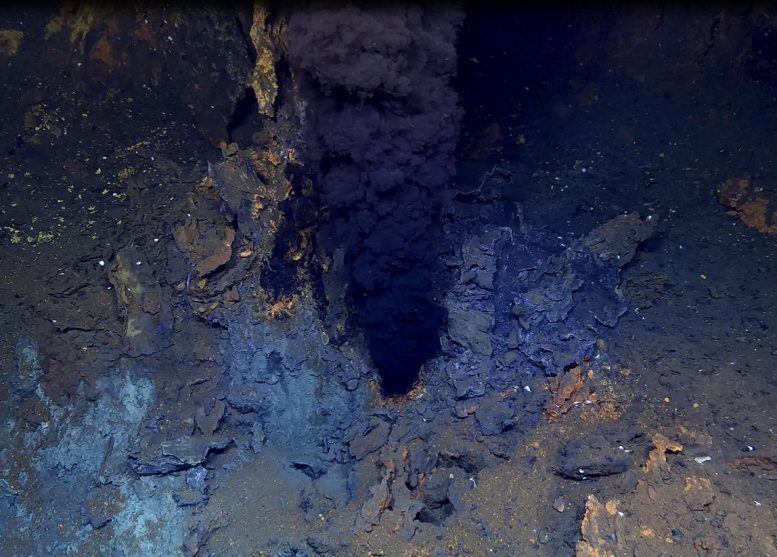
Enceladus black smoker at the Aurora Vent Field. Credit: HACON cruise 2021, REV Ocean
In the depths of the ocean, along tectonic plate boundaries, hydrothermal vents emit hot fluids. These fluids lack oxygen and are rich in metals like iron, manganese, and copper, as well as potentially carrying sulfides, methane, and hydrogen. As the hot water interacts with the cold, oxygen-rich seawater nearby, it forms hydrothermal plumes composed of smoke-like metal sulfide particles.
Rising hundreds of meters from the seafloor and dispersing thousands of kilometers away from their origin, hydrothermal plumes might appear to be inhospitable environments. Yet, a study recently published in Nature Microbiology reveals that specific bacteria manage to thrive in these seemingly precarious locations.
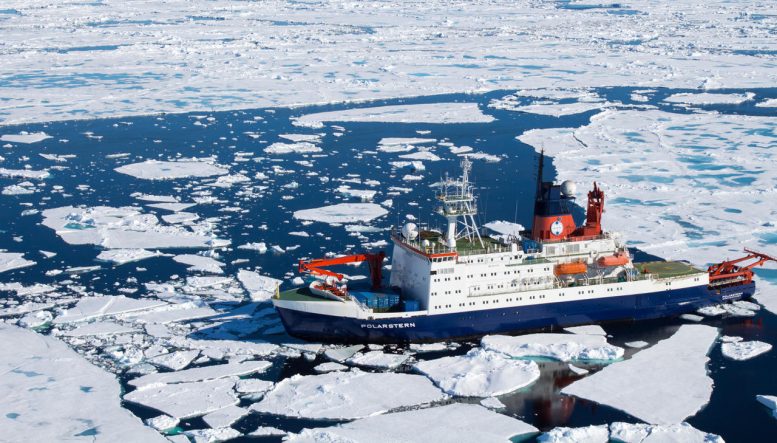
Research vessel Polarstern on expedition PS86 in the Greenland ice, approximately 4000 m above the Western Vulcanic Zone of Gakkel Ridge. Credit: Alfred Wegener Institute / Stefanie Arndt
More than just temporary visitors?
“We took a detailed look at bacteria of the genus Sulfurimonas”, says first author Massimiliano Molari from the Max Planck Institute for Marine Microbiology in Bremen, Germany. These bacteria have so far only known to grow in low-oxygen environments, but gene sequences had occasionally also been detected in hydrothermal plumes. As their name suggests, they are known to use energy from sulfide.
“It was assumed that they were flushed there from seafloor vent-associated environments. But we wondered whether the plumes might actually be a suitable environment for some members of the Sulfurimonas group.”
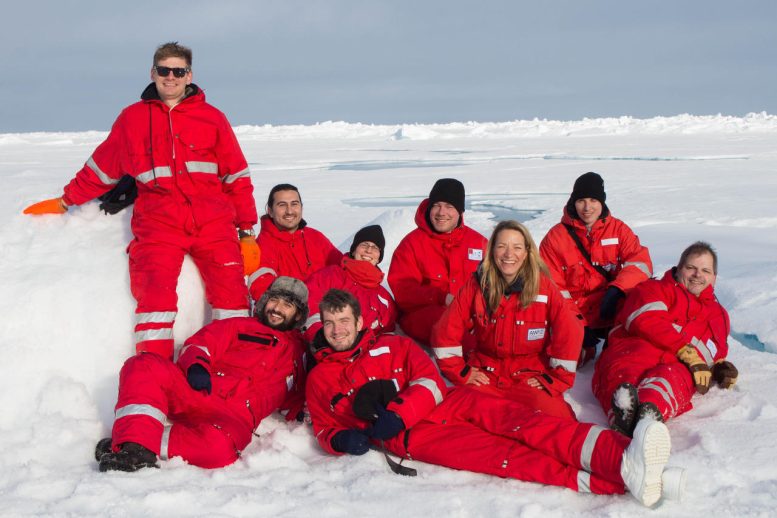
The Polarstern team led by Prof. Dr. Antje Boetius. Back row, from left: Gunter Wegener, Massimiliano Molari, Mirja Meiners, Rafael Stiens, Antje Boetius, Fabian Schramm, Norbert Rieper. Front row: Andreas Türke, Yann Marcon. Credit: Alfred Wegener Institute / Stefanie Arndt
Tough sampling conditions
Together with colleagues from the Alfred Wegener Institute, Helmholtz Centre for Polar and Marine Research in Bremerhaven (AWI), and the MARUM Center for Marine Environmental Sciences of Bremen University, Molari thus took on a challenging sampling trip to hydrothermal plumes in the Central Arctic and South Atlantic Ocean.
“We sampled plumes in extremely remote areas of ultraslow spreading ridges that were never studied before. Collecting hydrothermal plume samples is very complicated, as they are not easy to locate. Sampling becomes even more difficult when the plume is located at depths of more than 2500 meters and below Arctic sea ice, or within the stormy zones of the Southern Ocean”, explains Antje Boetius, group leader at the Max Planck Institute for Marine Microbiology and director of the AWI, who was the Chief scientist on the Arctic missions.
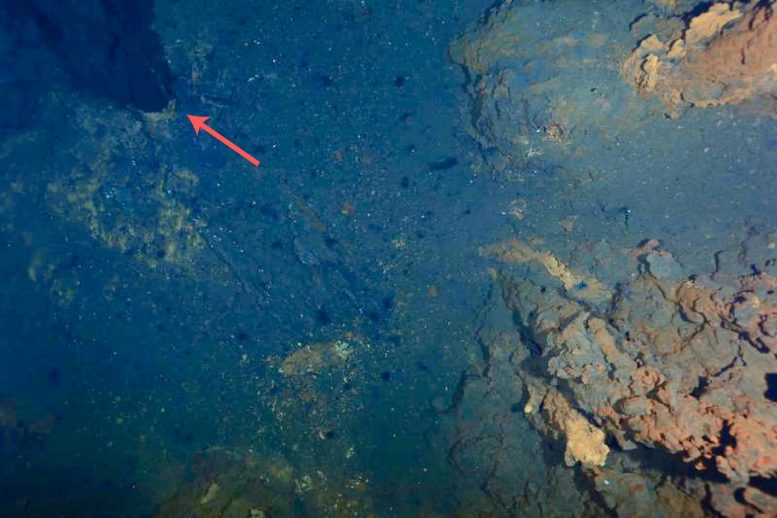
Aurora’s hydrothermal vents at Gakkel Ridge (Central Arctic). A snapshot of a hydrothermal vent (upper left corner, indicated by the red arrow) and chimneys (yellow-orange structures on the right) captured by the underwater camera system OFOS, which made it possible to identify the location of the hydrothermal vents field during expedition PS86. Credit: Cruise report
Onboard of the research vessel Polarstern, the scientists managed to collect samples and within this water studied the composition and metabolism of bacteria.
Well-equipped and widespread
Molari and his colleagues identified a new Sulfurimonas species called USulfurimonas pluma (the superscript “U” stands for uncultivated) inhabiting the cold, oxygen-saturated hydrothermal plumes. Surprisingly, this microorganism used hydrogen from the plume as an energy source, rather than sulfide. The scientists also investigated the microbes’ genome and found it to be strongly reduced, missing genes typical for their relatives, but being well-equipped with others to allow them to grow in this dynamic environment.
“We think that the hydrothermal plume does not only disperse microorganisms from hydrothermal vents, but it might also ecologically connect the open ocean with seafloor habitats. Our phylogenetic analysis suggests that USulfurimonas pluma could have derived from a hydrothermal vent-associated ancestor, which acquired higher oxygen tolerance and then spread across the oceans. However, that remains to be further investigated”, Molari says.
A look at genome data from other plumes revealed that USulfurimonas pluma grows in these environments all over the world. “Obviously, they have found an ecological niche in cold, oxygen-saturated, and hydrogen-rich hydrothermal plumes”, says Molari. “That means we have to rethink our ideas on the ecological role of Sulfurimonas in the deep ocean – they might be much more important than we previously thought.”
Reference: “A hydrogenotrophic Sulfurimonas is globally abundant in deep-sea oxygen-saturated hydrothermal plumes” by Massimiliano Molari, Christiane Hassenrueck, Rafael Laso-Pérez, Gunter Wegener, Pierre Offre, Stefano Scilipoti and Antje Boetius, 9 March 2023, Nature Microbiology.
DOI: 10.1038/s41564-023-01342-w


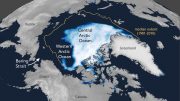
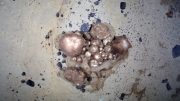

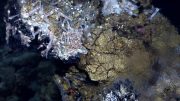
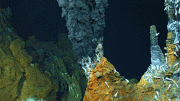


Be the first to comment on "Surviving the Extreme: Scientists Discover Life in the Smoke of Underwater Volcanoes"